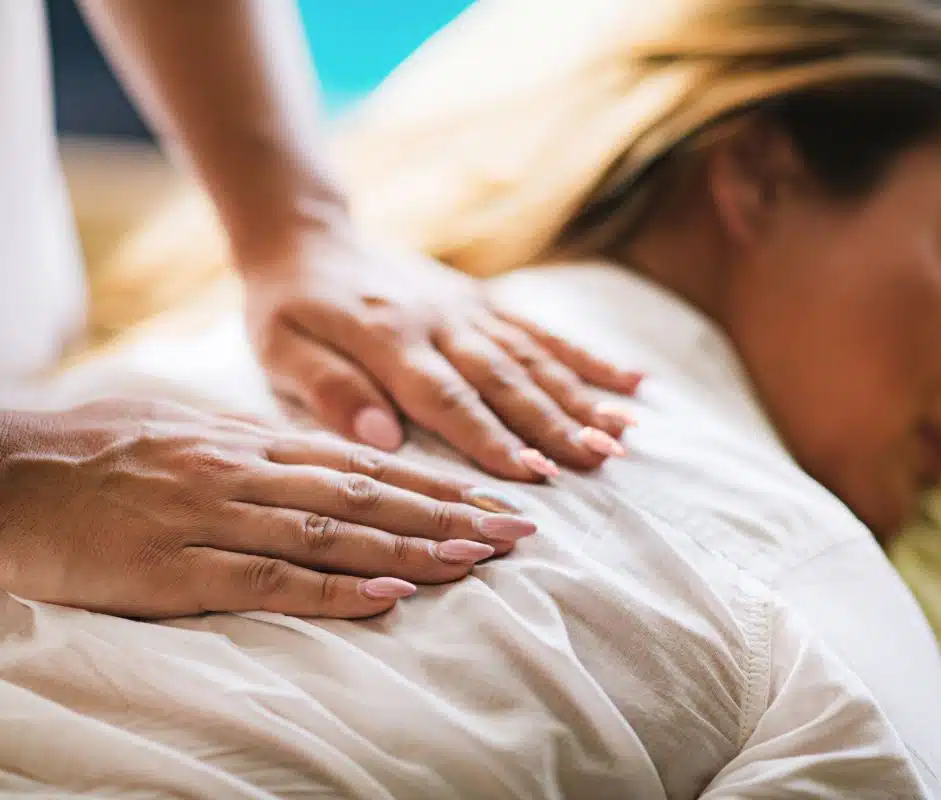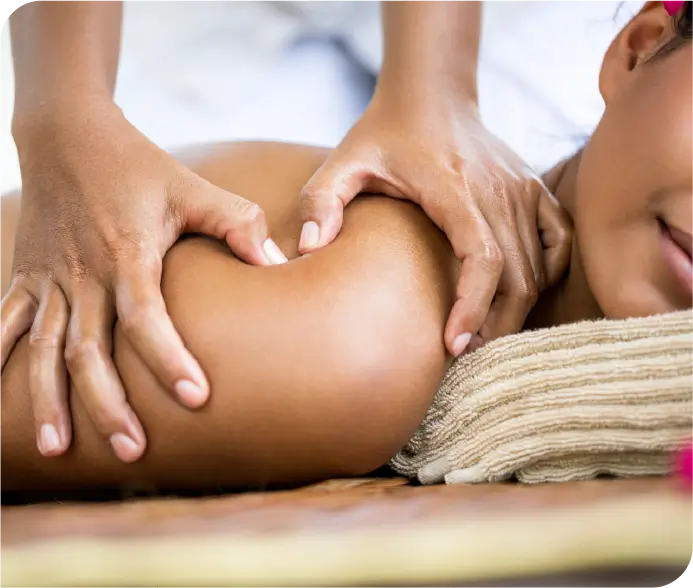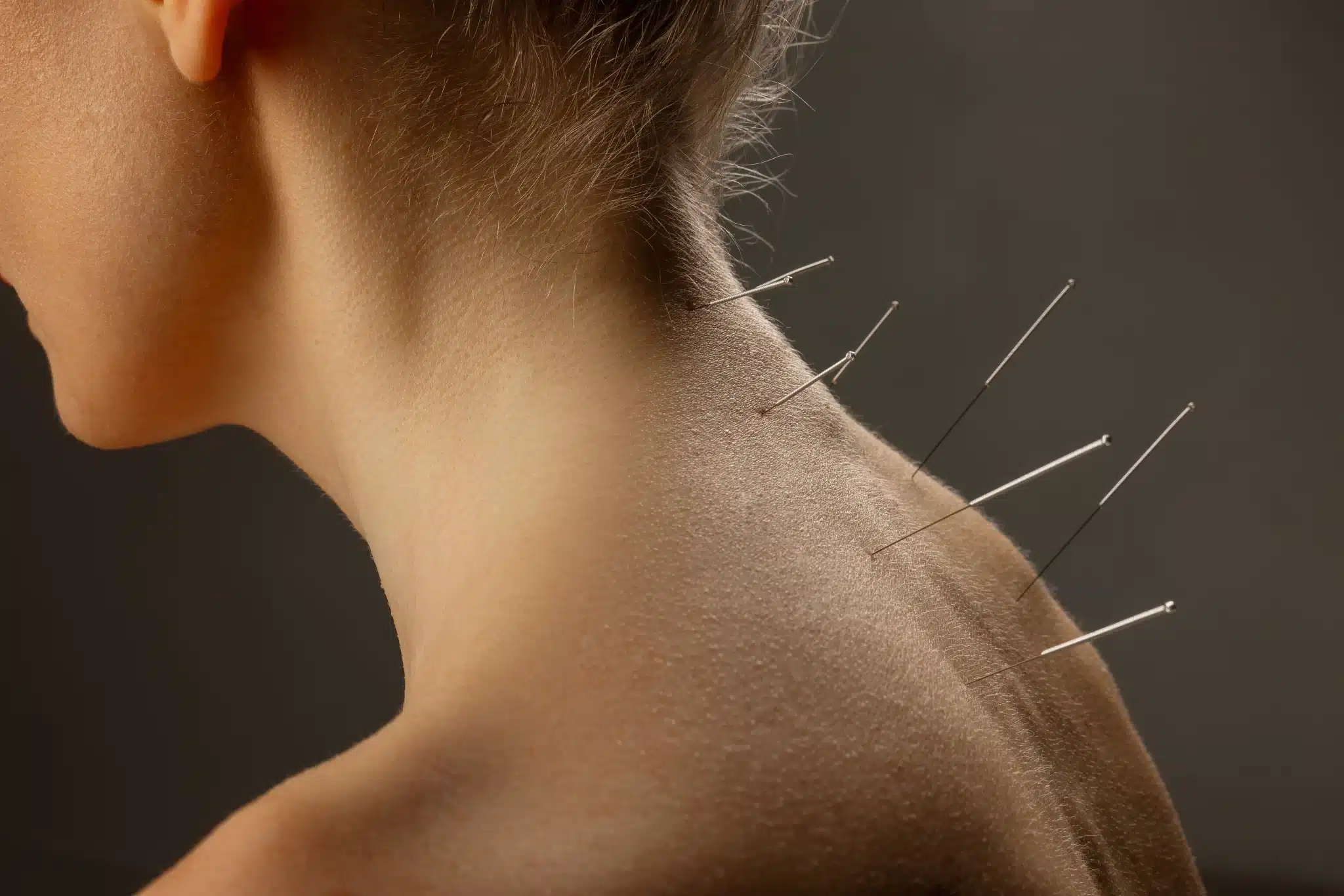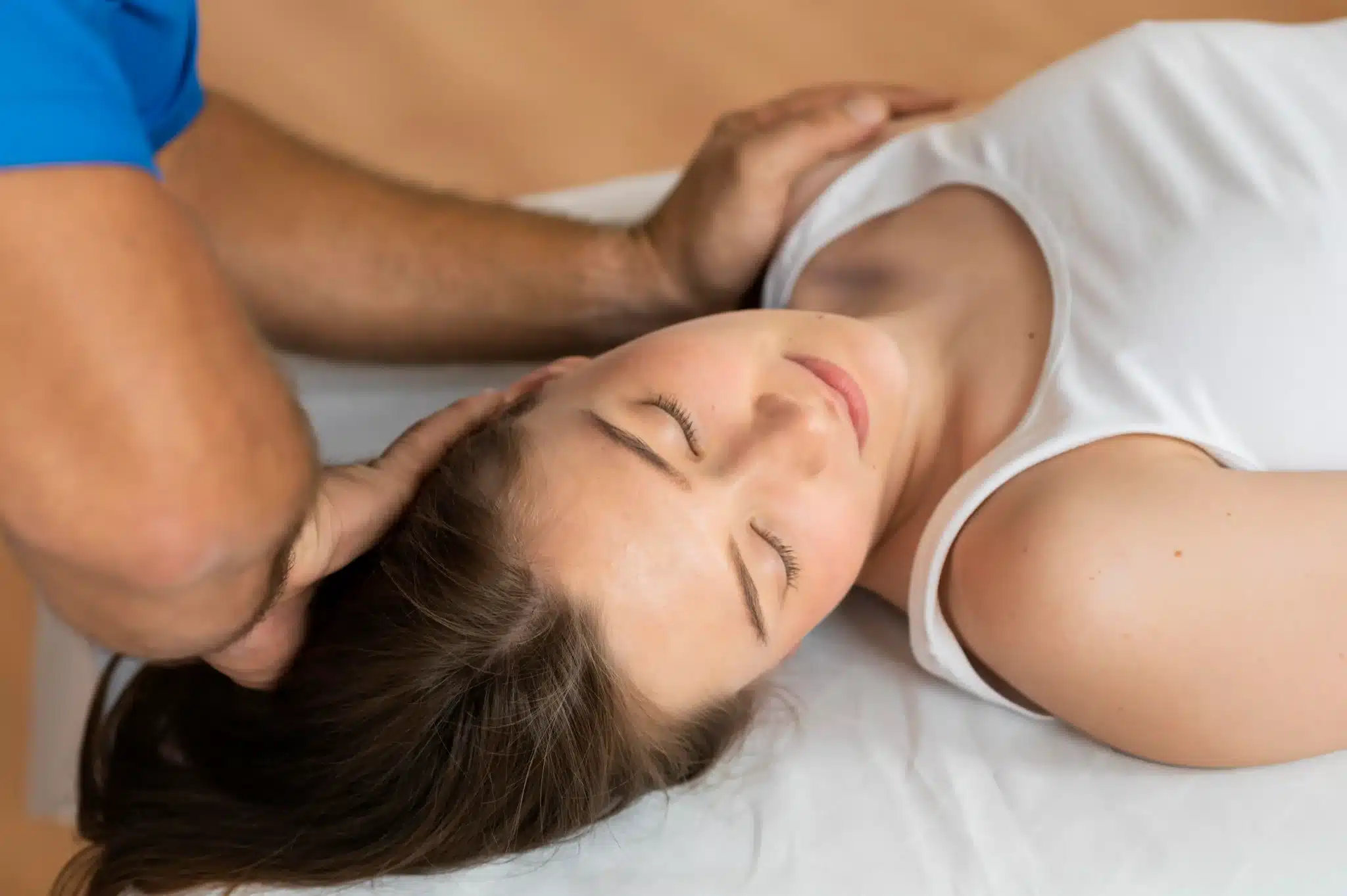The World Health Organization (WHO) says 619 million people worldwide had low back pain in 2020. It's the most common musculoskeletal issue globally. The WHO expects this number to jump to 843 million by 2050 as the population ages.
This shows we need better treatments and ways to manage M54 59 other low back pain.

Key Takeaways
- M54 59 is the ICD-10 code for "Other low back pain," a specific diagnosis for low back pain conditions.
- Low back pain is a widespread and debilitating condition, affecting over 600 million people globally.
- The prevalence of low back pain is expected to increase significantly by 2050 due to the aging population.
- Accurate diagnosis and coding of M54 59 other low back pain are crucial for effective treatment and reimbursement.
- This expert guide will provide comprehensive information on the diagnosis, causes, treatment options, and coding considerations for M54 59 other low back pain.
Introduction to M54 59 Other Low Back Pain
Understanding the M54.59 diagnosis code is key for healthcare workers and coders. It helps with low back pain cases. This code, part of the "M54 Dorsalgia" family, was introduced in 2022. It makes it easier to identify and classify different low back pain types.
Overview of M54 59 Diagnosis Code
The M54.59 code is for "Other low back pain." It's different from the old M54.5 (Low back pain) code, which was removed. Now, there are more specific codes like M54.50 (Low back pain, unspecified), M54.51 (Vertebrogenic low back pain), and M54.59 (Other low back pain). These codes help in diagnosing and coding low back pain more accurately. If you wanna know more about the differents Diagnosis Codes, Click in the following link: M54 59 and Other Dignosis Codes
Prevalence and Impact of Low Back Pain
Low back pain affects millions worldwide. The World Health Organization says it impacts 619 million people globally in 2020. It's the main cause of disability globally, with one in four adults experiencing it monthly.
The effects of low back pain go beyond physical issues. It can reduce quality of life, cause lost productivity, and put a big economic burden on healthcare systems.

Types of Low Back Pain
Low back pain is a common issue that can be divided into three main types: acute, subacute, and chronic. Knowing the different types is key for the right diagnosis and treatment.
Acute Low Back Pain
Acute low back pain starts suddenly and lasts a few days to weeks. It usually comes from an injury like a sprain or strain. This type of pain often goes away with rest and care. About 80% of people will experience acute low back pain at some point.
Subacute Low Back Pain
Subacute low back pain lasts between 4 to 12 weeks. It can start slowly or be a longer version of acute pain. This type of pain may need more specific treatments to stop it from becoming chronic.
Chronic Low Back Pain
Chronic low back pain lasts more than 12 weeks. It can stem from many causes, like degenerative disc disease or spinal stenosis. Chronic pain can greatly reduce a person's quality of life, leading to disability and mental health issues.

M54 59 Other Low Back Pain: Causes and Risk Factors
M54.59 other low back pain has many causes. These include mechanical or structural issues and inflammatory conditions. Common problems are strains, sprains, and degenerated or ruptured discs. Ankylosing spondylitis is another condition that can cause it.
Other factors include osteoporosis, infections, and back pain during pregnancy. These can all lead to M54.59 other low back pain.
Risk factors for M54.59 other low back pain are varied. Being overweight, having weak muscles, and jobs that are hard on the back can increase the risk. Smoking and poor health also play a part.
- Mechanical or structural issues, such as strains, sprains, and disc problems
- Inflammatory conditions like ankylosing spondylitis
- Osteoporosis, infections, and pregnancy-related back pain
- Obesity, weakened muscles, and physically demanding jobs
- Lifestyle factors like smoking and poor overall health
Here are some Benefits of Acupuncture for weight loss and for quitting smoking.
It's important to understand the causes and risk factors of M54.59 other low back pain. This knowledge helps in creating better prevention and management plans. Healthcare professionals can then help patients find relief and improve their lives.
"Low back pain is a highly prevalent musculoskeletal condition that can significantly impact individuals socially and economically. Identifying and addressing the various causes and risk factors is essential for effective management and prevention."
Diagnosis and Evaluation
Diagnosing M54.59 other low back pain starts with a detailed physical check-up. A healthcare provider will look at the patient's movement, strength, and flexibility. They also check for tenderness or muscle spasms in the lower back.
The provider might do neurological tests. These tests check for nerve problems or radiculopathy.
Physical Examination
The healthcare provider will carefully check the lower back and nearby areas. They might do several things:
- Check how well the patient can bend, twist, and extend their spine.
- Look at the strength and flexibility of muscles in the lower back and legs.
- Find out if there's tenderness, swelling, or muscle spasms in the lower back.
- Do neurological tests to see if nerves are involved, like reflex tests and feeling checks.
Imaging Tests
Healthcare providers might also use imaging tests to find the cause of M54.59 other low back pain. These tests include:
- X-rays - to see if there are any structural problems or wear and tear in the spine.
- MRI (Magnetic Resonance Imaging) - to get detailed pictures of the spine and soft tissues. This helps find issues like disc herniations or spinal stenosis.
- CT (Computed Tomography) scans - to see the bony parts of the spine in more detail.
The results of these tests, along with the patient's medical history and physical exam, help create a treatment plan for M54.59 other low back pain.
Treatment Options for M54 59 Other Low Back Pain
People with M54 59 other low back pain can try different treatments. These include medicines, physical therapy, and exercises. They can also try alternative therapies. A healthcare provider will help pick the best treatments for each person.
Physical Therapy and Exercise
Physical therapy is very important for M54 59 other low back pain. Physical therapists use many methods to help. These include exercises, manual therapy, and heat or ice treatments.
Doing low-impact exercises like walking or yoga also helps. They can reduce pain and improve overall health.
Alternative Therapies
Some people with M54 59 other low back pain find relief in alternative therapies. These include chiropractic adjustments, acupuncture, massage therapy, and herbal supplements. While the proof of their effectiveness varies, they can be helpful for some.
"A multi-component approach to the treatment of M54 59 other low back pain, incorporating medications, physical therapy, and alternative therapies, can often provide the best outcomes for patients."
Coding Considerations for M54 59 Other Low Back Pain
Healthcare providers need to know about Excludes1 edits for M54.59 other low back pain. These edits are key to ICD-10 coding for m54 59 low back pain. They help report the patient's condition accurately.
The Excludes1 edits for M54.59 other low back pain include:
- Low back strain (S39.012)
- Lumbago due to intervertebral disc displacement (M51.2-)
- Lumbago with sciatica (M54.4-)
If a patient's condition fits better with one of these codes, use that code instead of M54.59. This ensures accurate excludes1 edits for m54 59. It also improves the quality of medical records and insurance claims.
Following Excludes1 edits is vital for healthcare providers. It keeps them in line with ICD-10 coding standards. This way, providers can bill correctly for M54.59 other low back pain care.
Importance of Accurate Coding
Accurate coding for M54.59 other low back pain is key for many reasons. It makes sure the patient's condition is well-documented. This leads to the right treatment and management plans.
It's also vital for getting paid by insurance. Using the wrong ICD-10 code can cause claims to be denied or payments to be cut.
Accurate coding helps gather reliable data on low back pain. This data is crucial for healthcare policy and better treatments. ICD-10 code M54.5 (low back pain) was recently updated by CMS. Low back pain is a common diagnosis for physical and occupational therapists.
The need for accurate coding for M54.59 other low back pain is highlighted by ICD-10 updates. CMS updates ICD-10 codes to make diagnoses more specific. New codes for low back pain, like M54.2- (lumbago due to intervertebral disc displacement), have been introduced.
In the ICD-10 world, being specific is key to avoid denials and ensure proper payment. The move to more specific codes for low back pain aims to improve patient care and insurance processing.
"The ICD system, along with CPT codes, is the most widely used statistical classification system and is integral for reimbursement claims in the healthcare industry."
The importance of accurate coding for M54.59 other low back pain will only grow. By using the right ICD-10 or ICD-11 codes, healthcare providers help gather reliable data. This improves patient care and supports the development of better treatments for this common condition.
m54 59 other low back pain
The M54.59 code is for "Other low back pain" in the ICD-10-CM system. It's used when pain doesn't fit into other categories like strains or disc issues. People with M54.59 other low back pain might feel dull aches, sharp pains, muscle spasms, and have trouble moving their lower back.
The M54.5 code for low back pain has been updated. Now, it includes M54.50 for "Low back pain, unspecified" and M54.51 for "Vertebrogenic low back pain." The M54.59 code helps classify pain that doesn't fit into these categories.
ICD-10-CM code M54.59 is for other low back pain for billing. It started on October 1, 2024, in the U.S. version of ICD-10-CM. Accurate coding is key for good medical care and billing.
"The updated codes for reporting cough now include six more specific options like R05.1 for 'Acute cough' and R05.3 for 'Chronic cough.'"
Healthcare providers need to know about M54.59 and its relation to other low back pain. This helps with accurate billing and better patient care. By understanding M54.59, doctors can improve treatment and outcomes for their patients.
Symptoms of M54.59 Other Low Back Pain
- Dull aches in the lower back region
- Sharp, stabbing pains in the lower back
- Muscle spasms or tightness in the lower back
- Limited mobility and flexibility in the lower back
Knowing about M54.59 and its symptoms helps healthcare providers. They can give the right diagnosis, treatment, and billing for patients with other low back pain.
Prevention Strategies
Preventing low back pain is tough, but there are ways to lower the risk. Making lifestyle changes and using ergonomic tools can help. These steps can keep your spine healthy and lessen the pain of M54.59 other low back pain.
Lifestyle Modifications
Keeping a healthy weight and exercising regularly are key. They strengthen your core and back muscles. Also, good posture is important. Quitting smoking helps prevent disc degeneration and lowers the risk of back pain.
Ergonomic Considerations
For those who sit or do hard work all day, ergonomics is crucial. Using adjustable workstations and stretching regularly can help. Employers should also support ergonomic practices to keep their workers healthy.
"Chronic low back pain is typically treated with spinal injections, surgery, and pain medications, while anti-inflammatories and a rapid return to normal activities are recommended for acute low back pain."
Combining lifestyle changes with ergonomic practices can prevent low back pain. These actions boost your physical health and improve your life quality and productivity.
Conclusion
M54.59 other low back pain is a common issue that can really hurt a person's life. Knowing what causes it and how to treat it helps doctors create good plans. It's also key to code and document it right for better care and research.
Healthcare teams can help by focusing on both the body and mind. This way, people with M54.59 can feel better and live better lives.
Understanding M54.59 low back pain is crucial. It shows how important it is to know about it and how to help. Accurate coding and a team effort are vital. This helps patients get the care they need.
Healthcare providers need to stay up-to-date. This knowledge helps them help patients with M54.59 better.
Managing M54.59 other low back pain is a team effort. Doctors and patients working together can really make a difference. They can tackle the physical, emotional, and social sides of the issue.
This teamwork can lead to lasting relief. It can also improve a person's life quality a lot.
FAQ
What is the M5459 diagnosis code?
The M54.59 code is for "Other low back pain" in the ICD-10-CM system. It was introduced in 2022. This change came after the Centers for Medicare & Medicaid Services (CMS) removed the M54.5 code.
How prevalent is low back pain globally?
In 2020, 619 million people worldwide had low back pain. The World Health Organization (WHO) says it's the most common musculoskeletal issue. They predict 843 million cases by 2050 as the population ages.
What are the different types of low back pain?
Low back pain is divided into three types. Acute pain starts suddenly and lasts a few days to weeks. Subacute pain lasts 4 to 12 weeks. Chronic pain goes on for more than 12 weeks.
What are the common causes and risk factors for M54.59 other low back pain?
M54.59 other low back pain can stem from many causes. These include strains, sprains, and degenerated or ruptured discs. Inflammatory conditions like ankylosing spondylitis also play a role. Other factors include osteoporosis, infections, and pregnancy-related back pain.
Being overweight, having weak muscles, and jobs that are physically demanding increase the risk. Lifestyle choices like smoking and poor health also contribute.
How is M54.59 other low back pain diagnosed?
Diagnosing M54.59 starts with a physical exam. The doctor checks the patient's range of motion, strength, and flexibility. They look for tenderness or muscle spasms in the lower back.
Imaging tests like X-rays, MRI scans, or CT scans might be ordered. These help find any structural problems or pathologies in the spine and surrounding tissues.
What are the treatment options for M54.59 other low back pain?
Treatment for M54.59 may include medications, physical therapy, and alternative therapies. Over-the-counter pain relievers and prescription medications are used to manage pain. Physical therapy includes exercises and modalities like heat or ice to reduce pain and improve function.
Alternative therapies like chiropractic adjustments, acupuncture, and massage therapy can also help some people.
How important is accurate coding for M54.59 other low back pain?
Accurate coding for M54.59 is very important. It ensures the patient's condition is documented correctly. This leads to the right treatment and management strategies.
Correct coding is also key for insurance reimbursement. Using the wrong ICD-10 code can lead to denied claims or reduced payments. Accurate coding helps gather reliable data on low back pain, guiding healthcare policy and treatment development.
What are some strategies for preventing M54.59 other low back pain?
While you can't prevent M54.59 entirely, certain lifestyle changes can help. Maintaining a healthy weight and exercising regularly are important. Good posture and ergonomics are also crucial. Avoiding smoking is another key strategy.
By incorporating these habits into your daily life, you can promote spinal health and reduce low back pain.
Source Links
- https://www.webpt.com/blog/icd-10-code-for-low-back-pain
- https://www.patientstudio.com/lower-back-pain-code
- https://www.aapc.com/blog/87390-correctly-identify-low-back-pain/
- https://www.aapc.com/codes/coding-newsletters/my-orthopedic-coding-alert/diagnosis-deep-dive-get-the-lowdown-on-new-low-back-pain-codes-173762-article
- https://www.theraplatform.com/blog/757/low-back-pain-icd-10
Want to know more? Check out our related articles:
ChiroTouch Billing: Simplify Your Practice Finances
Unlocking Relief: The Top 5 Benefits of Acupuncture for Chronic Back Pain
Best benefits of Acupuncture for Weight Loss: A Natural Approach
Quit Smoking with Acupuncture: Effective Treatment





